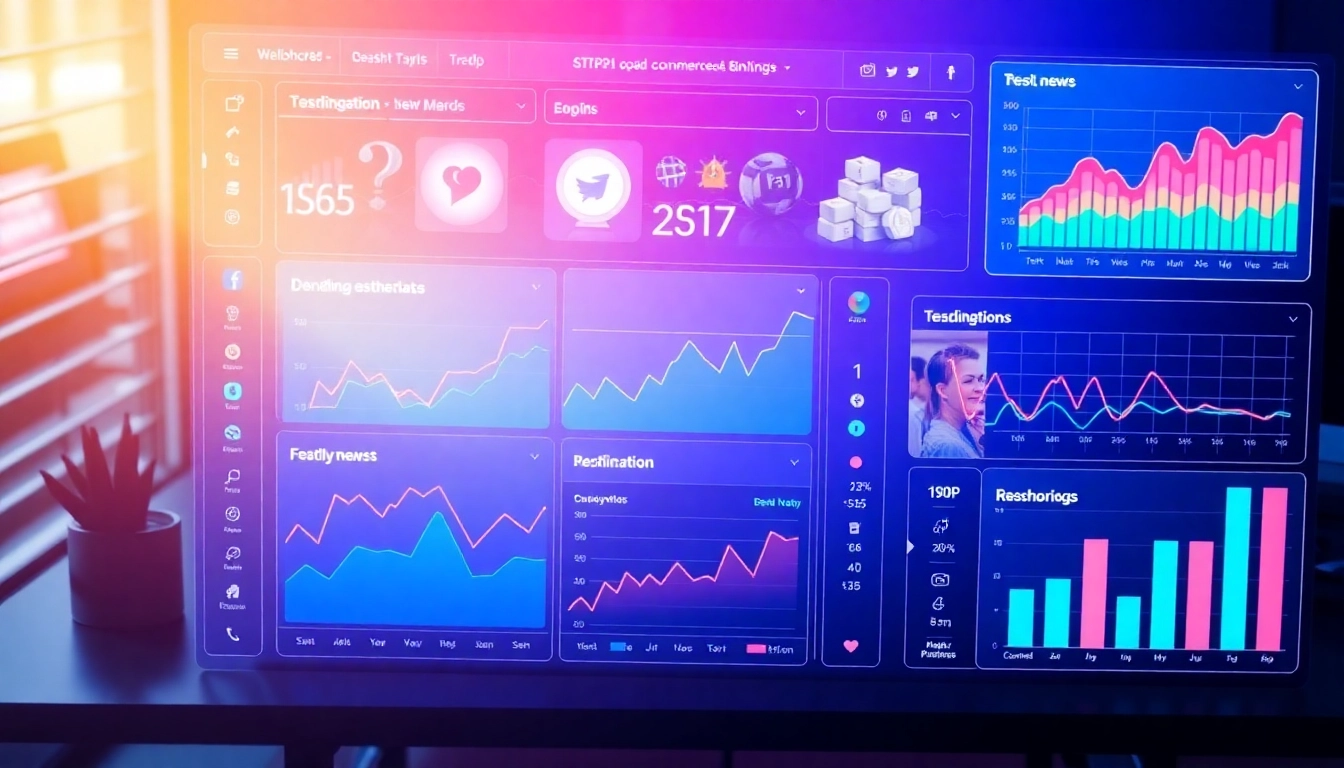Introduction: The Intersection of Business Intelligence and Cryptocurrency Innovation
In the rapidly evolving landscape of digital finance, few companies have managed to merge the worlds of business intelligence (BI) and cryptocurrency as seamlessly as microstrategy. Originally renowned for their pioneering BI software and cloud solutions, MicroStrategy’s recent strategic pivot into substantial cryptocurrency holdings has garnered significant attention from investors and industry analysts alike. This convergence exemplifies how innovative enterprises are leveraging advanced data analytics to navigate, analyze, and capitalize on the emerging crypto markets, ultimately redefining the boundaries of traditional business strategies.
Understanding MicroStrategy’s evolution from a pure BI provider to a crypto advocate offers insight into the dynamic synergy between data-driven decision-making and digital asset investment. This article delves into the company’s history, core services, technological innovations, and strategic moves into cryptocurrency, providing practical guidance for businesses considering similar paths and highlighting industry best practices.
1. MicroStrategy’s Origins and Evolution in Business Intelligence
History and Founding Principles
Founded in November 1989 by Michael J. Saylor and Sanju Bansal, MicroStrategy quickly established a reputation as a leading provider of enterprise business intelligence software. Headquartered in Virginia, the company’s mission centered around enabling organizations to transform raw data into actionable insights through innovative analytics platforms. Over the decades, MicroStrategy’s development has been guided by principles of empowering decision-makers with scalable, flexible, and robust BI solutions that adapt to the complex needs of global enterprises.
Core Services: Business Intelligence, Mobile Applications, and Cloud Infrastructure
MicroStrategy’s primary offerings include comprehensive BI software that facilitates data visualization, reporting, and predictive analytics. Their mobile software solutions extend access to critical insights beyond traditional desktops, allowing decision-makers to operate efficiently in a hyper-connected world. Moreover, their cloud-based services enable scalable deployment, data integration, and collaboration, reflecting a strategic emphasis on agility, security, and real-time analytics. This ecosystem positions MicroStrategy as a holistic solution provider in the enterprise analytics domain.
Recent Strategic Shift: From Software to Cryptocurrency Investment
While maintaining their core BI offerings, MicroStrategy has recently garnered headlines for their extensive Bitcoin holdings, amounting to nearly 600,000 BTC as of mid-2025. This move, initiated by CEO Michael Saylor and now led by President Phong Le, marks a notable expansion into digital assets, with the company viewing Bitcoin as a treasury reserve asset that aligns with their long-term strategic vision. This bold maneuver not only diversifies their financial portfolio but also exemplifies how technological expertise can underpin innovative investment strategies in the cryptocurrency space.
2. MicroStrategy’s Cryptocurrency Holdings and Strategic Moves
Bitcoin Acquisition: Scale and Significance
MicroStrategy’s Bitcoin holdings represent one of the largest corporate treasuries dedicated to digital assets. Starting in August 2020, MicroStrategy embarked on a deliberate Bitcoin accumulation strategy, purchasing over 597,000 BTC at an average price of approximately $66,384 per coin as of July 2025. This extensive treasury stockpile exemplifies a novel corporate approach, positioning Bitcoin as a store of value rather than just an investment, akin to precious metals in traditional reserves.
The significance extends beyond balance sheets; MicroStrategy’s stance influences market sentiment, encouraging other entities to view cryptocurrencies as legitimate treasury assets. This strategic adoption underscores Bitcoin’s emerging role as a hedge against inflation and economic uncertainty, especially in an era where traditional fiat currencies face volatility.
Impact on Business Model and Investor Confidence
MicroStrategy’s crypto-strategy has significantly impacted its business model, aligning its corporate identity with the burgeoning crypto economy. This shift has increased investor confidence among institutional and retail stakeholders, who recognize the company’s commitment to innovation and forward-thinking investment policies. Moreover, this move enhances MicroStrategy’s branding as a visionary leader, capable of pioneering new financial paradigms in tandem with its technological innovations.
Comparative Analysis: MicroStrategy vs. Competitors
Unlike other enterprise software firms, MicroStrategy’s aggressive Bitcoin accumulation sets it apart. While companies like Oracle or SAP focus solely on BI solutions, MicroStrategy has become a trailblazer in integrating cryptocurrency into corporate finance strategies. Their approach influences industry trends, prompting competitors to reassess the potential of digital assets in corporate treasury management. Observing the performance of MicroStrategy’s holdings relative to market fluctuations offers valuable insights into the viability of crypto as part of long-term corporate liquidity strategies.
3. Technological Innovations Powering MicroStrategy’s Growth
AI-Driven Data Analytics
MicroStrategy has been a pioneer in integrating advanced artificial intelligence into their BI platforms. AI-powered analytics facilitate predictive modeling, anomaly detection, and natural language querying, enabling users to derive deeper insights from complex datasets. These technologies empower enterprises to make more informed decisions swiftly, particularly crucial in volatile markets like cryptocurrency.
Leveraging Cloud Computing for Real-Time Decision-Making
Cloud infrastructure is integral to MicroStrategy’s offerings, providing scalable resources for processing massive volumes of data in real-time. This capability supports dynamic analytics, operational agility, and seamless collaboration across organizational silos. As industries increasingly rely on timely information, MicroStrategy’s cloud solutions ensure clients remain competitive in an interconnected digital economy.
Future Tech Developments and Industry Trends
Looking ahead, MicroStrategy is investing in evolving AI algorithms, edge computing, and blockchain integration. These innovations aim to enhance data security, decentralize analytics processing, and create new avenues for crypto-related analytics. As blockchain technology matures, MicroStrategy’s strategic focus on these cutting-edge areas positions them at the forefront of industry evolution, aligning technological progress with strategic business growth.
4. Practical Applications of MicroStrategy’s Technology Across Industries
Financial Sector: Cryptocurrency and Data Insights
MicroStrategy’s AI-driven BI software plays a vital role in the financial industry by providing real-time insights into crypto markets, risk assessment, and portfolio management. Their analytics tools enable financial institutions to optimize crypto trading strategies, monitor market volatility, and comply with regulatory standards with precision.
Retail and E-Commerce: Customer Data Optimization
Retailers utilize MicroStrategy’s platforms to analyze customer behavior, personalization trends, and sales patterns. By harnessing data analytics, these businesses can enhance customer experience, streamline inventory management, and develop targeted marketing campaigns, all supported by scalable cloud-based solutions.
Healthcare: Data-Driven Decision Processes
In healthcare, MicroStrategy’s tools assist in analyzing patient data, optimizing resource allocation, and predicting health trends. The ability to process diverse datasets securely and efficiently supports better decision-making, ultimately improving patient outcomes and operational efficiency.
5. Strategic Guidance for Businesses Considering MicroStrategy’s Solutions
Assessing Business Needs for BI and Data Analytics
Before implementing microstrategy solutions, organizations must evaluate their data maturity, integration requirements, and strategic objectives. Businesses should identify key performance indicators (KPIs), data sources, and desired insights to tailor their analytics environment effectively.
Effective Implementation Strategies
Successful deployment involves comprehensive planning, stakeholder engagement, and staff training. Integrating MicroStrategy’s tools into existing workflows requires aligning technical infrastructure with operational processes, ensuring smooth adoption and maximizing ROI.
Measuring ROI and Success
Quantifying the benefits of BI initiatives involves tracking improvements in decision-making speed, accuracy, and business outcomes. Metrics such as reduced operational costs, increased revenue, and enhanced customer satisfaction are critical indicators of success.



